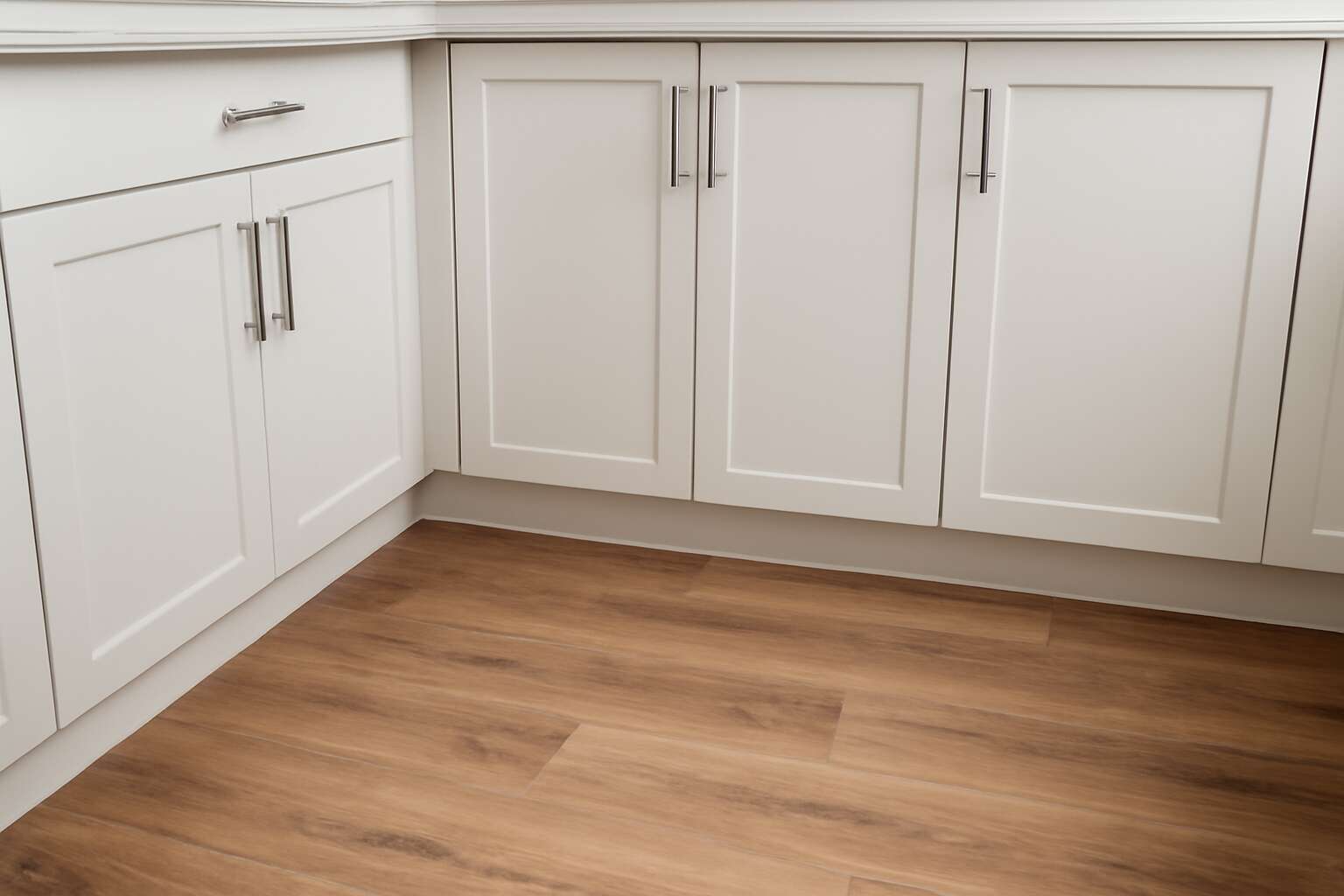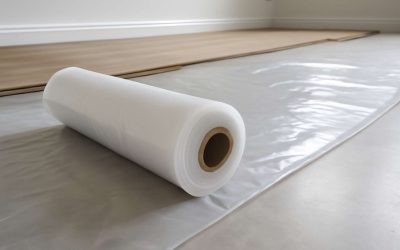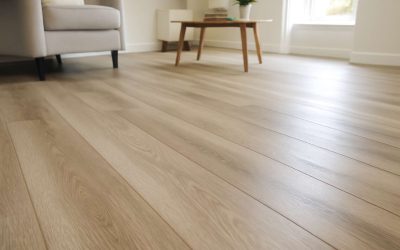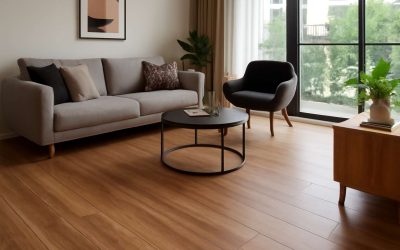Understanding Laminate Flooring Under Cabinets
Benefits of Installing Laminate Flooring Beneath Cabinets – Highlight advantages like space-saving, seamless appearance, and cost-effectiveness
Imagine a kitchen so seamlessly elegant that the flooring appears to flow uninterrupted beneath every cabinet and appliance. Installing laminate flooring under cabinets isn’t just about aesthetics; it’s a strategic choice that elevates your space’s functionality and visual harmony. This approach maximizes the sense of openness, making even the tightest corners feel more expansive and inviting.
One of the standout benefits of laminate flooring under cabinets is its cost-effectiveness. By avoiding the need for intricate cuts or additional trim, you save on both materials and installation time. Additionally, this method simplifies future renovations or replacements, as the flooring remains intact beneath the cabinetry, reducing maintenance hassle.
For those seeking a tidy, unified look, laminate flooring under cabinets offers a sleek, seamless appearance that transforms a mundane room into a captivating space. It also provides an excellent foundation for other design elements, ensuring your kitchen or laundry area remains both stylish and practical. Incorporating this technique can truly unlock the full potential of your interior design—without breaking the bank or sacrificing charm.
Challenges and Considerations – Discuss potential issues such as removal difficulty, height adjustments, and water sensitivity
Beneath the veneer of seamless elegance lies a darker truth—installing laminate flooring under cabinets can conjure unforeseen challenges that test patience and precision. Once laid, removing or replacing the flooring becomes an intricate dance with despair, as the cabinetry often acts as a barrier, anchoring the flooring in a stubborn embrace. It’s a delicate undertaking that demands careful planning, for any misstep can lead to costly rearrangements or irreversible damage.
Height adjustments pose another spectral dilemma. Cabinets and appliances may need to be shimmed or reconfigured to maintain harmony, especially if the laminate flooring under cabinets alters the overall height of the space. The subtle shift can ripple through the design, disrupting the visual flow and functional layout.
- Water sensitivity remains a lurking threat, especially in South Africa’s humid climate—laminate flooring beneath cabinets can warp or swell if moisture seeps into the seams. This vulnerability underscores the importance of waterproofing measures and vigilant maintenance to preserve the integrity of your flooring.
Preparation for Installing Laminate Flooring Under Cabinets
Measuring and Planning – Guidelines for accurate measurements and layout planning
Embarking on the journey to install laminate flooring under cabinets is akin to venturing into a realm where precision transforms a simple space into a sanctuary of seamless beauty. Before the first plank is laid, meticulous measurement and thoughtful planning become the enchanted compass guiding the way. An accurate blueprint not only ensures a flawless fit but also preserves the integrity of your design vision, especially when dealing with intricate cabinet layouts.
To achieve this, gather your tools—measuring tape, a pencil, and a level—and measure the length and width of the entire area with unwavering focus. Remember, even a millimeter off can ripple into misalignment, disrupting the harmonious flow of your flooring. Consider the placement of appliances or fixtures that might influence your layout, and account for expansion gaps—these tiny spaces are vital as they allow your laminate flooring under cabinets to breathe with the changing South African climate.
- Start by sketching a rough layout, noting where cabinets and appliances will sit.
- Measure the exact dimensions of each cabinet and appliance to ensure the laminate will fit perfectly beneath them.
- Double-check your measurements to avoid costly mistakes and plan for expansion gaps along the perimeter.
With these steps, your preparation becomes a spell of certainty, transforming a potentially daunting task into a smooth, satisfying process—ready to enchant your space with the understated elegance of well-laid laminate flooring under cabinets.
Tools and Materials Needed – List of essential tools and materials for a successful installation
Embarking on the noble quest of installing laminate flooring under cabinets requires more than just a good attitude—it demands the right arsenal of tools and materials. Think of it as assembling your personal knight’s armor for a battle against uneven floors and awkward corners. The essential tools include a measuring tape, a pencil, a saw (preferably a fine-tooth handsaw or a laminate cutter), and a hammer or rubber mallet to gently coax those planks into place. Don’t forget a level; nothing ruins a sleek look faster than a crooked floor!
In addition to your hardware, gather the materials necessary for a smooth operation. Underlay, for example, acts as a silent hero, providing cushioning and moisture resistance. You’ll also need spacers to maintain expansion gaps—these tiny allies prevent your laminate flooring under cabinets from buckling under South Africa’s capricious climate. For those tricky areas, a jigsaw might be your best friend, carving around pipes or irregular cabinet feet with finesse.
- Measuring tape
- Pencil and square
- Saw or laminate cutter
- Level and spacers
- Underlay for moisture and soundproofing
Equipped with these, your installation journey transforms from a daunting chore into an exciting craft, setting the stage for a flawless finish that seamlessly integrates laminate flooring under cabinets with the rest of your design. It’s all about preparation—because even the most dazzling floors start with the right tools in hand and a plan worth bragging about!
Removing Existing Cabinets – Step-by-step process and precautions
Removing existing cabinets is a pivotal step in preparing for the immaculate installation of laminate flooring under cabinets. This process demands patience and precision, especially when working within the unique constraints of South African homes. Before lifting those heavy units, ensure your workspace is cleared and protected from dust and debris. Carefully disconnect plumbing and electrical fixtures to avoid damage or mishaps. If cabinets are permanently affixed, you may need to gently loosen screws or nails, but beware of damaging the surrounding flooring or walls. Once the cabinets are removed, double-check the subfloor for levelness and stability, which is essential for a flawless laminate flooring under cabinets installation. Remember, this phase isn’t just about clearance—it’s about setting a solid foundation for the entire project, ensuring that the transition from cabinet to flooring is seamless and durable.
Installation Tips for Laminate Flooring Under Cabinets
Choosing the Right Laminate Flooring – Consider durability, thickness, and finish suitable for under-cabinet placement
When contemplating the installation of laminate flooring under cabinets, selecting the right material is crucial. Durability becomes paramount, especially in high-traffic areas where spills and impacts are common. A thicker laminate, typically around 8mm or more, offers added stability and resistance, making it ideal for under-cabinet placement. The finish also plays a vital role; a matte or textured surface can hide scratches and wear more effectively than a glossy alternative, maintaining a pristine look over time.
Choosing a laminate flooring under cabinets that balances aesthetic appeal with practical resilience ensures longevity. Consider options with enhanced water resistance—this feature is often overlooked but essential, especially in kitchens where splashes are inevitable. Proper planning involves precise measurements and understanding the layout, which can prevent costly adjustments later. Remember, a well-chosen laminate enhances the seamless flow of your interior, creating a sophisticated space that withstands the rigors of daily life with grace and ease.
Subfloor Preparation – Ensuring a flat, clean, and level surface
In the delicate dance of transforming a kitchen or study, the foundation is often overlooked yet holds the key to lasting elegance. When installing laminate flooring under cabinets, the subfloor becomes the silent guardian of your aesthetic vision. A flat, pristine surface is essential—imperfections whisper disruptions into the seamless veneer you desire. This stage is where the true artistry begins, ensuring that every plank will sit perfectly, as if the floor itself is whispering stability and grace.
Preparation is more than mere routine; it is an act of respect for the craftsmanship to come. Start by removing any debris, dust, or old adhesive that might mar the surface. Use a level to identify uneven spots—those troublesome elevations that threaten to throw off your entire design. If needed, apply a leveling compound to create a uniformly smooth canvas. Remember, a level subfloor not only prevents gaps and creaks but also prolongs the life of your laminate flooring under cabinets, safeguarding against future upheavals.
Once the surface is meticulously prepared, consider the following crucial steps for a flawless installation:
- Ensure the subfloor is dry, as moisture can compromise the integrity of laminate flooring under cabinets.
- Check the moisture levels with a suitable meter—excess moisture could spell disaster over time.
- Lay down a moisture barrier or underlayment to enhance soundproofing and prevent water seepage, especially vital in South African kitchens prone to splashes.
With these measures, the subfloor transforms from a mere foundation into a resilient stage, ready to support the beauty and durability of your chosen laminate flooring under cabinets. Every careful step taken here echoes in the quiet confidence of a space that marries form with function, standing resilient against the rigors of daily life.
Installing the Laminate – Detailed instructions on installation technique, including expansion gaps and securing the flooring
Installing laminate flooring under cabinets is an art that demands precision and patience. The process begins with careful placement—ensuring the planks are laid with a slight expansion gap around the perimeter. This gap is crucial; it allows the flooring to breathe and accommodate natural expansion due to temperature fluctuations, especially in South African kitchens where climate variability is common. When fitting the laminate, start from a corner and work your way outward, clicking each plank securely into the next. Remember, a tight fit is essential but never at the expense of flexibility—this balance preserves the integrity of the flooring under cabinets over time.
To secure the seamless look, use spacers between the wall and the planks, maintaining consistent expansion gaps. If you’re installing under cabinets, it’s often best to cut the last row of planks to fit precisely before final placement. For added stability, some installers opt to glue the planks at the edges, especially in high-traffic areas. This technique helps prevent shifting, which can be a concern with laminate flooring under cabinets. When all is aligned and secured, carefully lower the cabinets back into place, ensuring the flooring underneath remains undisturbed and perfectly supported.
In the end, patience and attention to detail are your best allies. Proper installation not only enhances the aesthetic appeal of your space but also prolongs the lifespan of your laminate flooring under cabinets, transforming a simple upgrade into a lasting investment. With every precise cut and click, you’re creating a foundation of beauty and resilience that will serve your home for years to come!
Handling Water and Moisture Issues – Preventing damage with proper moisture barriers and sealing
In the realm of laminate flooring under cabinets, moisture can be an insidious adversary. South African kitchens, with their warm sunlit mornings and occasional humid spells, make it essential to guard against water intrusion. A well-placed moisture barrier acts as an invisible guardian, shielding your beautiful flooring from the subtle seepage that can cause swelling or warping over time.
To fortify your installation, consider sealing the edges of the laminate with a high-quality, moisture-resistant sealant. This creates a resilient shield around the planks, preventing water from wicking into the core and causing damage. Remember, even the smallest leak—perhaps a forgotten spill or a slow plumbing drip—can compromise the integrity of laminate flooring under cabinets. Vigilance is key!
- Install a moisture barrier beneath the laminate to provide an extra layer of protection.
- Seal the edges of the flooring where it meets cabinets and walls for added security.
- Regularly check for leaks or moisture build-up, especially in high-humidity seasons.
By embracing these simple yet effective precautions, you can ensure your laminate flooring under cabinets remains pristine and durable, standing resilient against the unpredictable South African climate. Moisture management isn’t just an afterthought; it’s the secret to preserving the beauty and longevity of your flooring masterpiece.
Special Considerations for Different Cabinet Types
Kitchen Cabinets – Addressing height adjustments, appliances, and water exposure
When considering laminate flooring under cabinets, one must navigate the unique intricacies posed by different cabinet types. For instance, kitchen cabinets vary widely in height, style, and material, each demanding tailored adjustments to ensure a flawless fit. Height adjustments are especially crucial; custom shims or leveling beads may be necessary to accommodate uneven floors or cabinet bases, preventing gaps and ensuring stability.
Appliances integrated into cabinetry, such as dishwashers or ovens, introduce additional complexities. Cutting precise access points in the laminate flooring under cabinets allows for seamless appliance installation and future maintenance. Moreover, water exposure is a persistent threat, especially in kitchens and laundry rooms. Installing a moisture barrier beneath the laminate flooring under cabinets can serve as a fortress against spills or leaks, safeguarding both the flooring and the cabinetry.
Incorporating these considerations ensures that your laminate flooring remains durable and visually cohesive beneath a variety of cabinet configurations. Whether you’re working with traditional wood cabinetry or sleek modern units, understanding the specific needs of each cabinet type lays the foundation for a stunning, long-lasting finish.
Bathroom Cabinets – Water resistance tips and moisture management strategies
Bathroom cabinets demand special attention when installing laminate flooring under cabinets. Unlike kitchens, where water exposure is frequent, bathrooms pose a continuous threat of moisture seeping into the subfloor. To combat this, it’s essential to incorporate high-quality moisture barriers beneath the laminate flooring under cabinets. These barriers act as a shield, preventing water from penetrating and causing damage or warping over time.
Additionally, managing humidity levels with proper ventilation can make a significant difference. Consider sealing all edges and joints with waterproof sealant, especially around cabinet bases and plumbing fixtures. This extra layer of protection ensures that the laminate flooring remains resilient against spills or leaks that are almost inevitable in a bathroom setting. When these water-resistant tips are followed, your under-cabinet laminate flooring will stand the test of time, maintaining both its beauty and integrity in the humid confines of a bathroom.
Custom and Built-in Cabinets – Installation approaches for non-standard cabinetry
When dealing with the architectural artistry of custom and built-in cabinets, one must approach the installation of laminate flooring under cabinets with a delicate balance of precision and foresight. These non-standard cabinetry marvels often defy conventional methods, demanding bespoke solutions that honor their unique contours and structural intricacies. The challenge lies not only in fitting the flooring seamlessly beneath irregular edges but also in maintaining the integrity of the design aesthetic.
For such installations, a thoughtful approach involves meticulously measuring every nook and cranny, ensuring that the laminate flooring under cabinets aligns flawlessly with the overall space. It’s not merely about fitting pieces together but about creating a harmonious visual flow, almost as if the floor itself is whispering in unison with the cabinetry. Sometimes, this process requires custom cuts or specialized underlayment to accommodate uneven surfaces, height discrepancies, or intricate moldings.
- Start by removing or temporarily detaching any removable components of the cabinet to facilitate precise measurement and installation.
- Use high-quality moisture barriers to shield the subfloor from potential water ingress, especially around plumbing fixtures and joints.
- Securely fix the laminate flooring beneath the cabinets, ensuring expansion gaps are respected to prevent buckling or warping over time.
In the realm of non-standard cabinetry, patience and attention to detail reign supreme. With a meticulous plan, the installation of laminate flooring under cabinets transforms from a daunting task into a work of art—an enduring testament to craftsmanship and careful planning in the pursuit of a seamless, elegant space.
Maintenance and Care Tips
Cleaning Laminate Floors Under Cabinets – Best practices for maintaining cleanliness and appearance
Maintaining the pristine allure of laminate flooring under cabinets requires a delicate balance of vigilance and gentle care. These hidden surfaces often go neglected, yet their cleanliness directly influences the overall ambiance of your space. Regular dusting and sweeping with a soft cloth help prevent abrasive particles from scratching the surface, preserving that seamless look. For deeper cleaning, a damp mop with a manufacturer-approved laminate floor cleaner is ideal—never use excessive water, as moisture is a silent adversary.
To ensure longevity, consider implementing a few best practices. For instance, placing protective pads beneath cabinet feet can minimize scratches and dents caused by movement or weight. If spills occur, address them immediately—delaying can invite warping or swelling, especially since water sensitivity remains a concern with laminate flooring under cabinets. Periodic inspection of the edges and seams can also reveal early signs of damage, allowing for prompt intervention before issues escalate.
In essence, the care of laminate flooring under cabinets is not merely about cleanliness; it is an act of respect for the material’s integrity. By adopting a mindful approach to maintenance, your floors will continue to reflect beauty and resilience, anchoring your space with subtle strength and enduring elegance.
Addressing Damage or Wear – Repair and replacement options for damaged sections
When laminate flooring under cabinets sustains damage, swift and strategic repairs can save both time and money. Cracks, chips, or warping caused by moisture or heavy impacts require careful assessment. In many cases, minor scratches can be addressed with specialized laminate touch-up kits, restoring the surface’s seamless finish and preventing further deterioration.
If the damage is more extensive—such as swollen sections or significant cracks—it may be necessary to replace the affected planks. This process involves carefully removing the damaged section without disturbing the surrounding flooring, a task that demands patience and precision. Remember, maintaining the integrity of laminate flooring under cabinets is crucial, especially since the confined space often hides issues until they become severe.
For damaged areas, consider these options:
- Matching new planks to the existing flooring to preserve aesthetic continuity
- Utilizing professional repair services for complex or large-scale damage
- Reinforcing vulnerable spots with protective pads or sealants to prevent future wear
By addressing damage promptly and thoughtfully, you ensure the resilience and visual appeal of your laminate flooring under cabinets remain uncompromised, anchoring your space with enduring elegance and strength.
Preventative Measures – Using mats, sealants, and routine inspections
Keeping your laminate flooring under cabinets in pristine condition isn’t just about aesthetics; it’s about preserving the integrity of your entire space. Regular maintenance and preventative measures can significantly extend the lifespan of your flooring, saving you money and frustration in the long run. A simple yet effective strategy involves using mats at entry points and high-traffic zones, which trap dirt and moisture that could otherwise seep under the cabinets and cause damage.
Sealing vulnerable edges with protective sealants creates an additional barrier against moisture and spills—common culprits behind warping or swelling in laminate flooring under cabinets. Routine inspections are equally vital, allowing you to spot early signs of wear or moisture intrusion before they escalate. For added peace of mind, consider implementing a monthly visual check, paying close attention to seams, corners, and areas around plumbing fixtures where water exposure is inevitable.
- Place anti-slip mats in high-moisture zones to prevent water seepage
- Apply sealants along cabinet edges and seams for extra protection
- Perform routine inspections to catch issues early
These small, consistent efforts cultivate a resilient environment for your laminate flooring under cabinets, ensuring it remains as beautiful and durable as the day it was installed. After all, thoughtful care transforms a simple floor into a lasting foundation of comfort and style in your home.
FAQs About Laminate Flooring Under Cabinets
Can laminate flooring be installed under all types of cabinets? – Clarify suitability and exceptions
Laminate flooring under cabinets presents a captivating harmony of form and function, yet not every cabinet type welcomes this seamless embrace. The question often posed is whether all cabinets can be paired with laminate flooring beneath — the answer, nuanced and layered like a well-crafted melody. Generally, most standard kitchen and bathroom cabinets are suitable for installation over laminate flooring, especially when precision measures and proper subfloor preparation are observed. However, certain exceptions exist, particularly with heavy, custom-built cabinetry or those with intricate bases that make removal or installation challenging.
For cabinetry that is affixed deeply or designed with non-removable bases, the risk of damaging the flooring or creating uneven surfaces increases. Additionally, water-sensitive cabinets—such as those in laundry rooms or wet areas—demand extra precautions to protect the laminate from moisture infiltration. Ultimately, assessing the cabinet’s weight, design, and water exposure potential is essential before proceeding with the installation of laminate flooring under cabinets. The harmony of a space often hinges on these subtle considerations, where practicality meets aesthetic brilliance.
Is it difficult to remove cabinets after installing laminate flooring? – Discuss removal process and tips
Removing cabinets after installing laminate flooring under cabinets can be a delicate task, especially if not planned carefully. The process varies depending on the type of cabinet and how securely it’s attached. For standard cabinetry, lifting and detaching usually involves unscrewing or unfastening from the wall, but this can sometimes risk damaging the laminate flooring beneath. Proper tools, like a crowbar and a drill, are essential to minimize stress on both the cabinet and the flooring.
One of the biggest challenges is maintaining the integrity of the laminate flooring while removing the cabinets. Damage can occur if the cabinets are glued or fixed tightly with no allowance for movement. To ease the process, it’s advisable to:
- Label and document the position of cabinets beforehand.
- Work slowly and gently to prevent chipping or cracking the laminate.
- Use a pry bar carefully to lift cabinets without scratching or lifting the laminate flooring under cabinets.
In some cases, adjusting the height or repositioning cabinets may be necessary, especially if they are tightly fitted or custom-built. Overall, patience and proper planning are key to removing cabinets without compromising the laminate flooring under cabinets, ensuring a clean removal and potential reinstallation down the line.
How does installing under cabinets impact resale value? – Insights on home valuation
When weighing the impact of installing laminate flooring under cabinets on home resale value, the picture becomes intriguingly complex. The seamless, polished look of laminate flooring under cabinets can elevate a home’s aesthetic, often making spaces appear larger and more cohesive. This visual harmony appeals to discerning buyers seeking a modern, unified style that signals meticulous craftsmanship. In fact, homes with well-installed laminate flooring under cabinets tend to attract higher offers, especially when the flooring complements the overall decor.
However, it’s essential to recognize that improper installation or damage during removal might raise questions for prospective buyers. If the laminate flooring under cabinets is pristine and expertly laid, it becomes a subtle yet powerful selling point—highlighting both style and durability. Conversely, if the flooring shows signs of wear or if removal becomes a costly, complicated affair, it could potentially diminish the home’s value. Ultimately, meticulous planning and professional installation of laminate flooring under cabinets can be a strategic asset in enhancing your property’s allure in the South African real estate market.




0 Comments